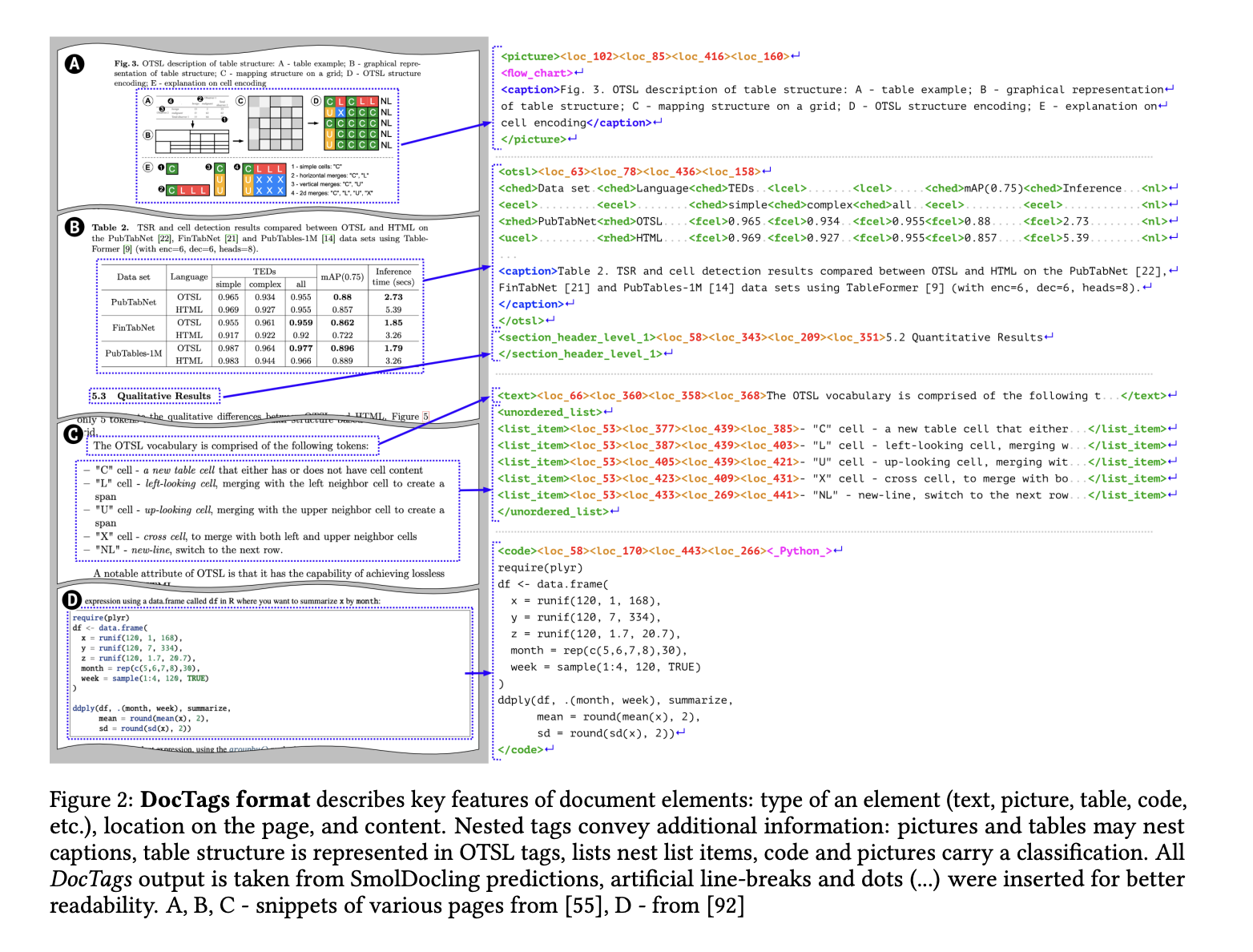
Challenges in Document Conversion
Converting complex documents into structured data has been a significant challenge in computer science. Traditional methods, such as ensemble systems and large foundational models, often face issues like fine-tuning difficulties, generalization problems, hallucinations, and high computational costs. Ensemble systems may excel in specific tasks but struggle to generalize due to reliance on handcrafted pipelines. Meanwhile, multimodal foundational models, while powerful, can be costly and unreliable.
Introducing SmolDocling
Researchers from IBM and Hugging Face have developed SmolDocling, a 256M open-source vision-language model (VLM) tailored for multi-modal document conversion. Unlike larger models, SmolDocling simplifies the process by handling entire pages with a single model, reducing complexity and resource requirements. Its compact design, with only 256 million parameters, makes it lightweight and efficient.
Innovative Features
SmolDocling utilizes a universal markup format called DocTags, which effectively captures page elements, structures, and spatial contexts. Built on Hugging Face’s SmolVLM-256M architecture, it minimizes computational demands through optimized tokenization and visual feature compression. The innovative DocTags format allows for clear separation of document layout, text, and visual elements like equations and charts.
Performance and Efficiency
SmolDocling demonstrates exceptional performance in benchmark tests, outperforming larger models in various document conversion tasks. For instance, it achieved a lower edit distance (0.48) and higher F1-score (0.80) in full-page document OCR tasks compared to models with significantly more parameters. It also excelled in equation transcription and code snippet recognition, setting new benchmarks in precision and recall.
Versatile Applications
What distinguishes SmolDocling from other OCR solutions is its ability to manage diverse document elements, including complex items like code, charts, and equations. It effectively handles a wide range of documents, from scientific papers to patents and business forms. By providing structured metadata through DocTags, it enhances usability and eliminates ambiguity found in formats like HTML or Markdown.
Conclusion
SmolDocling marks a significant advancement in document conversion technology, proving that compact models can outperform larger counterparts in critical tasks. The research demonstrates how targeted training and innovative data formats can address traditional challenges. SmolDocling sets a new standard for efficiency and versatility in OCR technologies, offering valuable resources for the community with openly available datasets and a compact model architecture.
Next Steps
Explore how AI can transform your business processes. Identify areas for automation, assess key performance indicators (KPIs), and choose tools that align with your objectives. Start with small projects to evaluate effectiveness before scaling up your AI initiatives.
Contact Us
If you need assistance with managing AI in your business, reach out to us at hello@itinai.ru. Connect with us on Telegram, X, and LinkedIn.

























